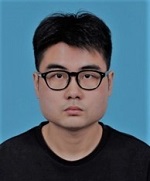Special Session: Integrated Sensing and Communications, Low-Altitude Economy, Wireless Communications, Radar Signal Processing
The rapid rise of low-altitude networks is transforming fields such as environmental monitoring, precision agriculture, and emergency response—demanding real-time sensing and communication in dynamic, resource-constrained environments. ISAC offers a promising solution by integrating sensing and communication, especially for UAV-based platforms with strict size, weight, and power limitations. It enables efficient spectrum use, low latency, and enhanced situational awareness. However, challenges such as mobility-induced interference, dynamic channels, and aerial coordination remain under investigation. This special session brings together academia and industry to address these issues, foster cross-disciplinary innovation, and accelerate the deployment of intelligent, scalable ISAC solutions for low-altitude applications.
This session centers on cutting-edge wireless communication and signal processing technologies related to Integrated Sensing and Communication (ISAC), with a particular emphasis on their applications in the emerging low-altitude economy. What sets this topic apart is its dual focus: it not only emphasizes the novelty of theoretical developments, but also highlights their practical relevance and transformative potential in real-world industrial scenarios. Given the interdisciplinary nature and the strong application orientation of this topic, a dedicated special session is essential to bring together researchers and engineers. This platform will facilitate the exchange of innovative ideas and foster potential collaboration that bridges theoretical advances with industrial deployment—an integration not typically covered in the regular program.
Related topics:
Important Dates:
Submission Deadline: March 25, 2026
Notification: April 25, 2026
Registration: May 10, 2026
Submit Method:
1, submit it via the link: http://www.easychair.org/conferences/?conf=icicsp2026 (after entering the link, click on the corresponding topic)
2, send your manuscript to icicsp@vip.163.com with subject "Submit+Special Session-13+Paper Title". (请通过邮件发送稿件,邮件题目:Submit+Special Session-13+Paper Title)
CHAIRMANS:

Fan Liu is currently a Professor with the School of Information Science and Engineering, Southeast University, Nanjing, China. He has 10 papers selected as IEEE ComSoc Best Readings. He is the Founding Academic Chair of the IEEE ComSoc ISAC Emerging Technology Initiative (ISAC-ETI), an Elected Member of the IEEE SPS Sensor Array and Multichannel Technical Committee (SAM-TC), the Founding Member of the IEEE SPS ISAC Technical Working Group (ISACTWG), an Associate Editor of IEEE TCOM, IEEE TMC, and a Guest Editor of IEEE JSAC, etc. He has served as the Organizer and Co-Chair for several workshops, special sessions and tutorials in flagship IEEE conferences, including ICC, GLOBECOM, ICASSP, SPAWC, and MobiCom. He is a TPC Co-Chair of the 2nd-4th IEEE Joint Communication and Sensing (JC&S) Symposium, a Symposium Co-Chair for IEEE GLOBECOM 2023, and a Track Co-Chair for the IEEE WCNC 2024. He is an IMT-2030 (6G) ISAC Task Group member. He received the 2023 IEEE Communications Society Stephan O. Rice Prize, the 2023 IEEE ICC Best Paper Award, the 2023 IEEE/CIC ICCC 2023 Best Paper Award, the 2021 IEEE Signal Processing Society Young Author Best Paper Award, the 2019 Best Ph.D. Thesis Award of Chinese Institute of Electronics, etc.

Fuwang Dong is currently an Associate Professor with the College of Intelligent Systems Science and Technology, Harbin Engineering University (HEU), Harbin, China. Prior to that, he was a Post-Doctoral Researcher with the Southern University of Science and Technology, Shenzhen, China, from 2022 to 2024. He received his B.Sc., M.Sc., and Ph.D. degrees from HEU, Harbin, China, in 2014, 2017, and 2022, respectively. He was the recipient of the IEEE/CIC ICCC Best Paper Award and the Best Ph.D. Thesis Award of HEU and Heilongjiang Association for Artificial Intelligence in 2023. He has been named an Exemplary Reviewer for IEEE TGCN 2022 and IEEE COMML 2023. His research interests include integrated sensing and communications (ISAC), array signal processing, and intelligent sensing systems.

Zhen Du is currently a lecturer with the School of Electronic and Information Engineering, Nanjing University of Information Science and Technology, Nanjing, China. He received the B.Eng. degree in communication engineering from Northwestern Polytechnical University, Xi'an, China, in 2016 and the Ph.D. degree in information and communication engineering from Shanghai Jiao Tong University, Shanghai, China, in 2022. His research interests include integrated sensing and communication, beam management in vehicular networks, and radar signal processing.

Nanchi Su is currently an associate research fellow with the Guangdong Provincial Key Laboratory of Aerospace Communication and Networking Technology, Harbin Institute of Technology (Shenzhen), Shenzhen, China. She received the B.Eng. and M.Eng. from Harbin Institute of Technology, Harbin, China, in 2015 and 2018, respectively. She received the Ph.D. degree from University College London, London, UK, in 2023. Her research interests include integrated sensing and communication (ISAC), signal processing, network security, space-air-ground integrated network (SARGIN), and situational awareness.
